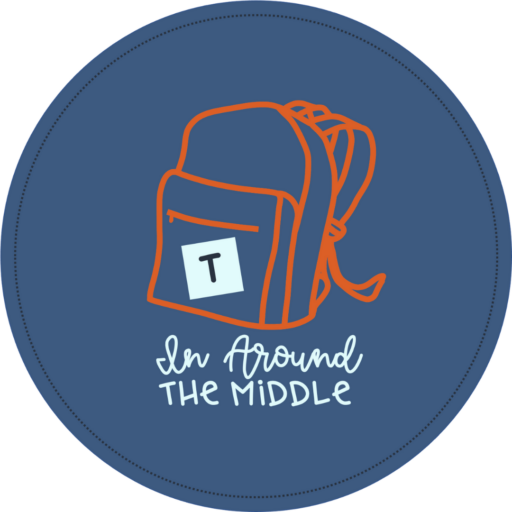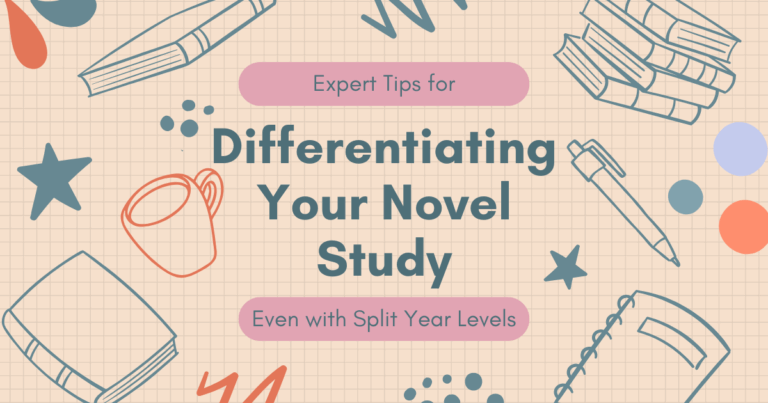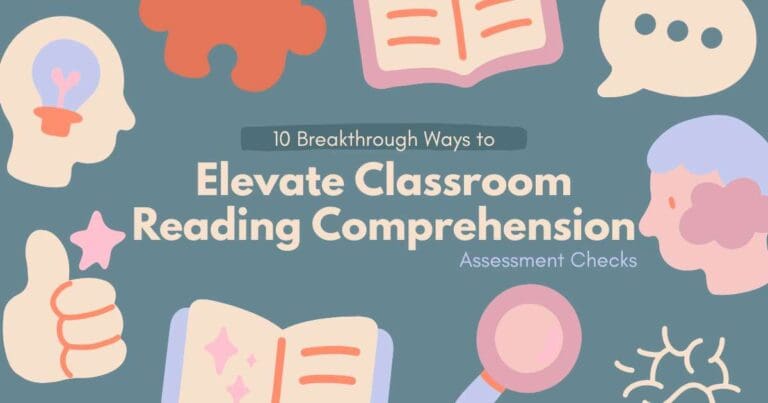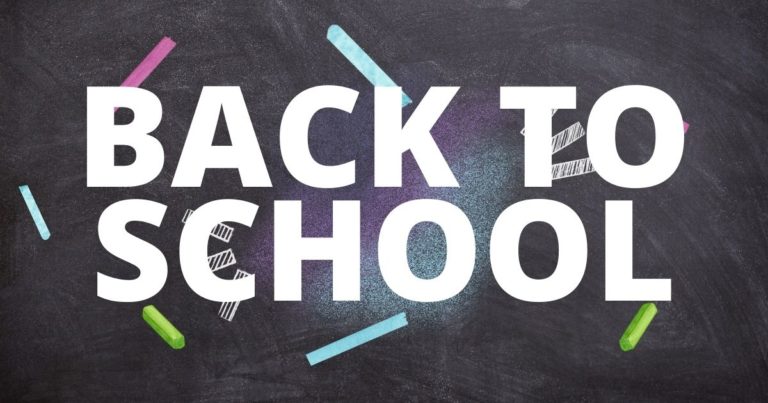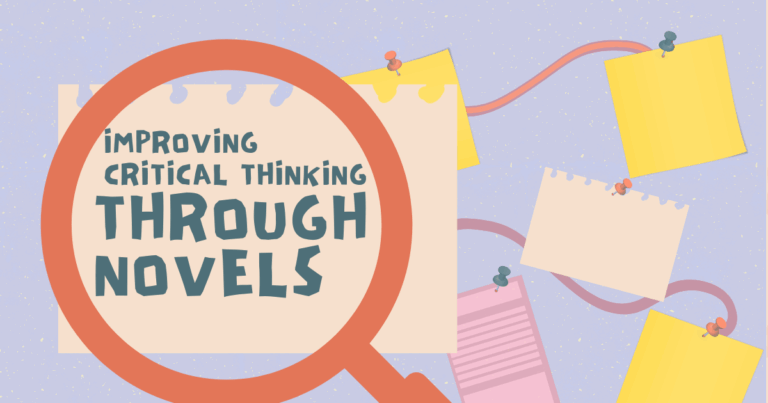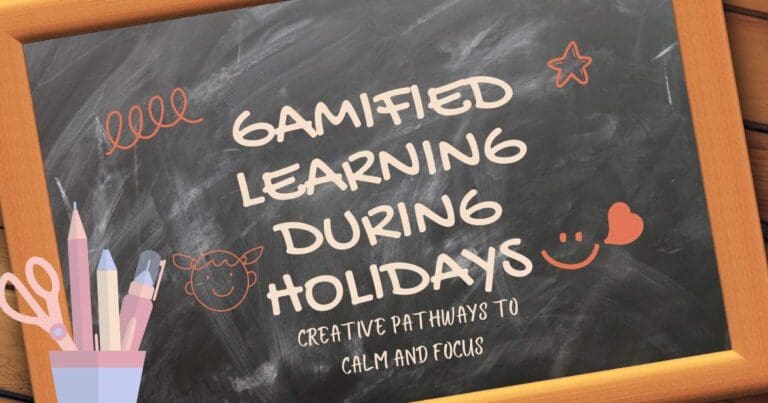Breakthrough Classroom Culture: Movement Activities That Energize and Unite Students
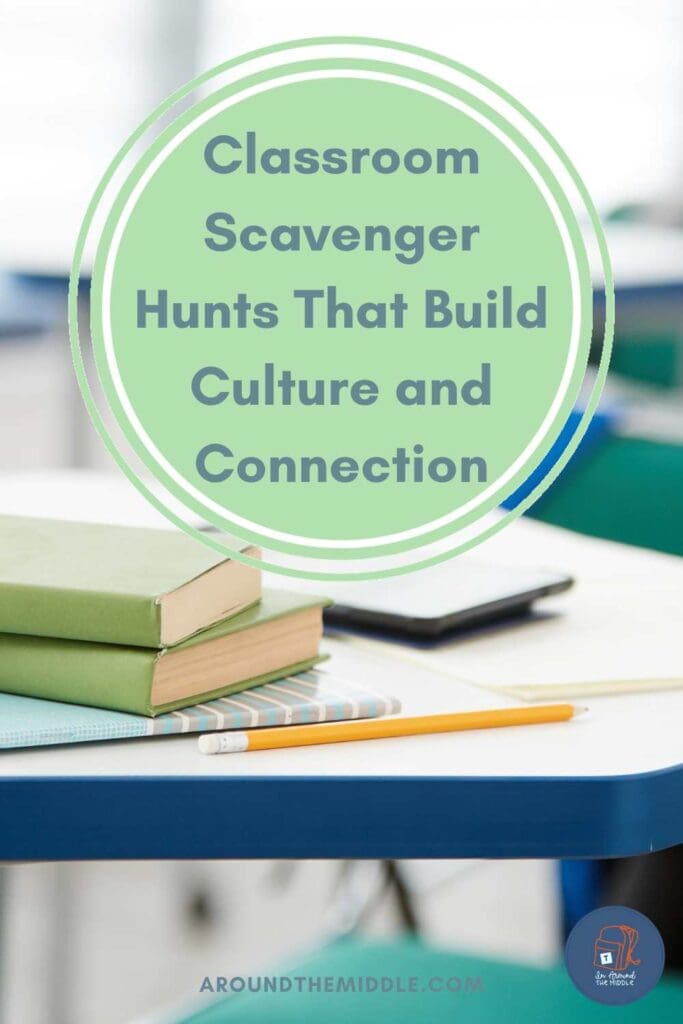
Creating a strong classroom culture doesn’t happen by accident—it’s built with intention, consistency, and connection. One of the most powerful tools to establish this foundation in the first few weeks is movement. As I’ve shared in previous posts like From Chaos to Connection and Make It Count, I believe classroom movement activities belong at the centre of student engagement, not on the periphery.
Students returning to school after a long break aren’t ready to sit still for long stretches. They’re out of practice. We do them a disservice when we open the year with desk-bound routines and passive listening. Instead, the first few weeks are the ideal time to bring in classroom movement activities that establish expectations, energise learning, and build relationships.
Here’s how to make movement part of your classroom culture strategy from day one.
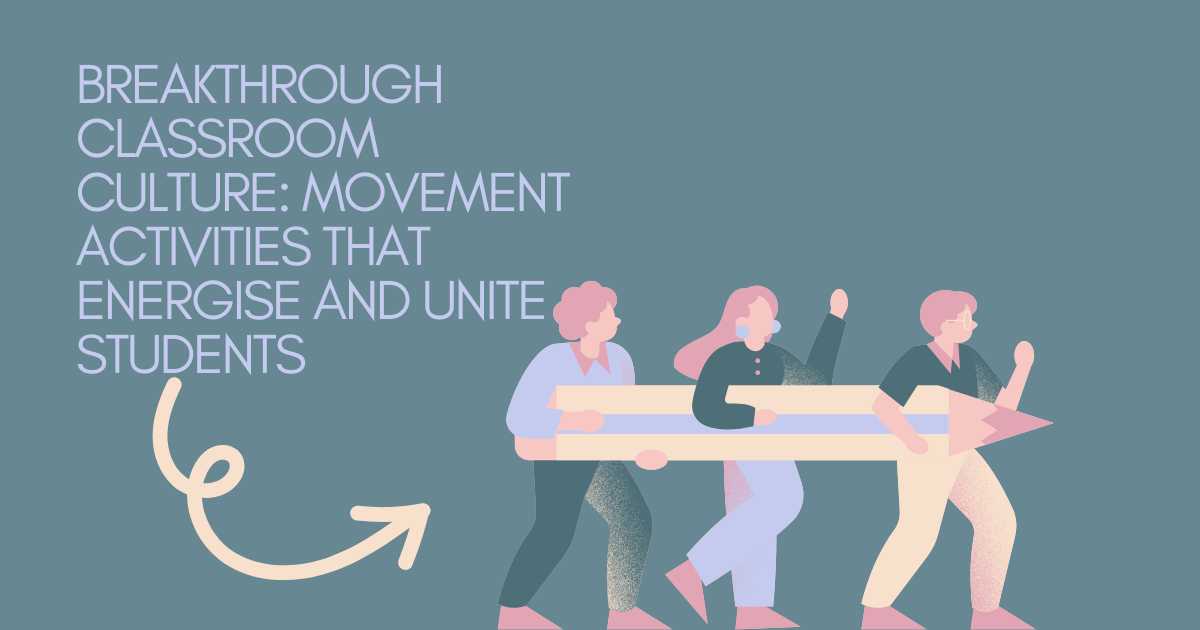
Why Classroom Movement Activities Belong in the First Few Weeks
Movement activates the brain. When students are physically engaged, they’re more likely to retain information, collaborate meaningfully, and regulate their behavior. This is especially important during the early weeks of school when students are learning how your classroom works, who their peers are, and what kind of learner they’ll be this year.
As I wrote in From Chaos to Connection, movement can transform a noisy, restless class into a focused, collaborative one—if it’s structured with purpose. The goal is not chaos, but active learning that builds stamina, independence, and trust.
Scavenger Hunts That Build Classroom Community
One of the most accessible and effective classroom movement activities to kick off the year is the humble scavenger hunt. These tasks get students up and moving while learning something meaningful—about their classroom, their peers, or your shared goals.
Try these variations:
- Classroom Procedure Hunt: Hide clue cards around the room that introduce routines (e.g., where to hand in work, how to ask for help). Groups then try to develop their understanding of the routines and do a gallery walk to compare.
- Peer Interview Hunt: Give students a “Find Someone Who” grid to complete as they circulate and talk.
- Values Hunt: Let students uncover your classroom norms or expectations through clues that lead to a final whole-class discussion.
These movement-based tasks promote curiosity, collaboration, and an early sense of belonging. They also gently reinforce rules and routines without a lecture.
Group Problem-Solving With Purposeful Classroom Movement Activities
Another high-impact approach is to use classroom movement activities that involve collaborative problem-solving. These tasks push students to think critically while working with others—ideal for setting the tone for your learning environment.
A few options:
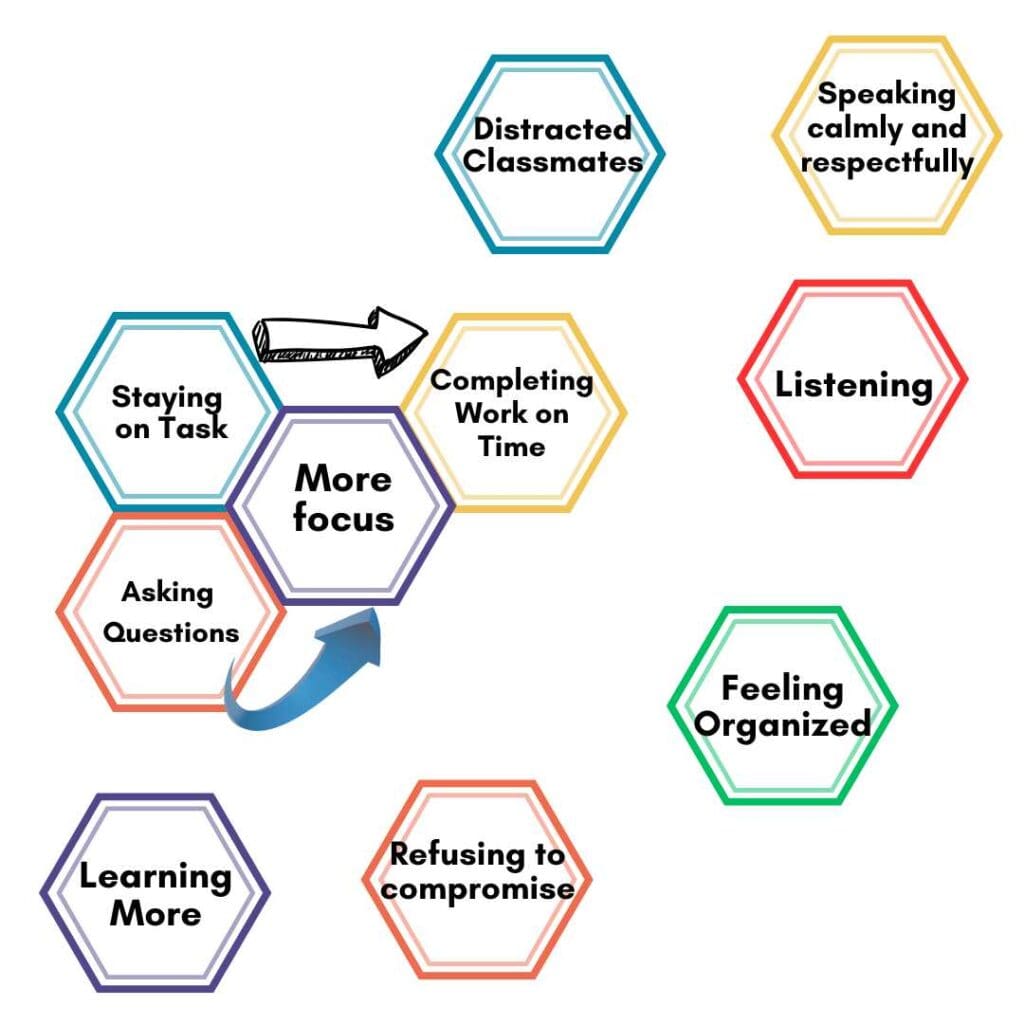
- Mini Escape Challenges: Create themed puzzles where students solve clues to “unlock” a message about your classroom values.
- Silent Line-Up Challenges: Ask students to form a line by birth month or shoe size—no talking allowed. They’ll quickly learn that teamwork doesn’t always require words.
- Station Rotations with a Twist: Instead of content-heavy tasks, use stations to teach teamwork strategies or learning dispositions. Movement between tasks adds variety and structure. Classroom Management themed hexagonal thinking activities are great for this. Check out this blog post on how to develop your own or if you’re short on time grab some ready-made ones here.
I dig deeper into these ideas in Frustration to Breakthrough, where I explain how structured struggle through active learning builds resilience.
Hands-On Icebreakers That Actually Work
Not all icebreakers are created equal. The best ones go beyond “tell us your favourite colour” and instead involve real interaction, motion, and laughter. These classroom movement activities help break down social barriers and set the tone for a collaborative year.
A few that work well:

- Gallery Walks: Students respond to personal prompts on posters, then walk around to read and add reactions to their peers’ answers. You can also incorporate this activity into your teaching and create a Gallery Walk scavenger hunt around topics such as figurative language, camera angles, math terms, or a specific history subject.
- Would You Rather Corners: Post contrasting options (e.g., doughnut vs. ice cream) in the corners of the room and have students physically choose their answer. Add discussion questions to deepen the connection. Alternatively, you could jump into your class novel with a pre-reading debatable statements that start students thinking such as ‘People should always tell children the full truth, no matter how painful.’ (example for Bud Not Buddy).
- Puzzle Piece Groups: Hand out puzzle pieces or cards that match with others in the class. Students must circulate to find their group, then complete a mini-task together.
These kinds of movement-based icebreakers allow students to express themselves while gradually easing into teamwork expectations.
Suggested Timeline: Classroom Movement Activities in the First Few Weeks
You don’t need to do a full-blown escape room on Day One. Instead, layer in different types of classroom movement activities over the first few weeks:
- Week 1: Scavenger hunts, low-stakes peer games, classroom tour activities
- Then Week 2: Group tasks with built-in movement and problem-solving
- Week 3: Movement-based activities tied to learning goals or content integration
- Ongoing: Reflection prompts, gallery walks, learning stations, and team-building tasks that keep students moving with purpose
Movement should be a thread, not a one-off.
What to Keep in Mind
Turn your hex webs into a gallery walk. Display each group’s work around the Prep Can Be Minimal: Many classroom movement activities require little more than clipboards, printed cards, or space to move.
Think About Flow: Set up your room to allow circulation. Build in transitions that don’t derail focus.
Differentiate: Offer roles for quieter students or those with mobility concerns—note-taker, clue reader, question-asker.
Debrief Often: Help students connect the movement with their learning. Ask, “What did this teach you about how we work together?”
Movement Isn’t a Gimmick—It’s a Strategy
You don’t need to choose between calm and chaos. Movement, when used strategically, actually brings focus, engagement, and connection. As I’ve written in multiple posts, including Make It Count, movement energises students and makes learning feel alive.
Let the first few weeks reflect your classroom values: collaboration, curiosity, and active participation.
Ready to Try It?
If you’re looking to introduce movement with intention, start small—but start now. From low-prep scavenger hunts to hands-on group challenges, classroom movement activities can transform the way your students engage with one another and with learning.
To make it easy, I’ve created a range of ready-to-use resources that support movement-based, collaborative learning. You’ll find escape-room-style novel activities, gallery walks, and scavenger hunts in my Teachers Pay Teachers store, all designed to build thinking, teamwork, and classroom culture.
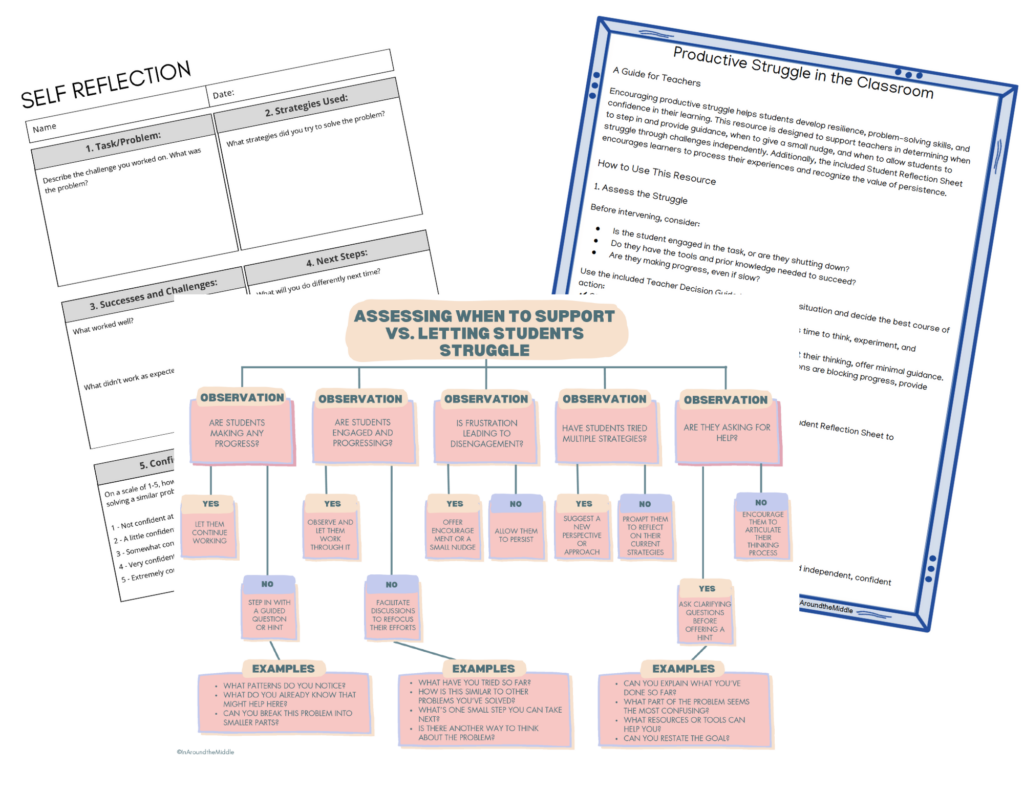
Want a no-cost way to get started? Download my free Productive Struggle Activity—a perfect introduction to meaningful group work that encourages students to persist, collaborate, and reflect. It’s ideal for the first few weeks and sets the tone for an active, student-centred classroom.
Let movement be the foundation of your classroom culture—not an afterthought. Your students will thank you for it.
Want to Read More?
From Chaos to Connection: The Magic of Movement-Based Activities in the Classroom
Make It Count: 5 Engaging Student Activities to End Big
Frustration to Breakthrough: Elevating Learning with Productive Struggle Activities
Happy teaching
